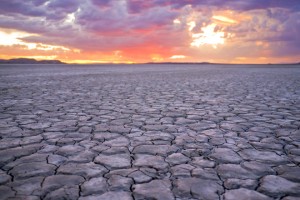 Call it what you may, but regardless of labels most climate scientists agree that our future weather systems are much more likely to be more extreme: more prolonged and more violent.
Call it what you may, but regardless of labels most climate scientists agree that our future weather systems are much more likely to be more extreme: more prolonged and more violent.
From ars technica:
If there was one overarching point that the fifth Intergovernmental Panel on Climate Change report took pains to stress, it was that the degree of change in the global climate system since the mid-1950s is unusual in scope. Depending on what exactly you measure, the planet hasn’t seen conditions like these for decades to millennia. But that conclusion leaves us with a question: when exactly can we expect the climate to look radically new, with features that have no historical precedent?
The answer, according to a modeling study published in this week’s issue of Nature, is “very soon”—as soon as 2047 under a “business-as-usual” emission scenario and only 22 years later under a reduced emissions scenario. Tropical countries will likely be the first to enter this new age of climatic erraticness and could experience extreme temperatures monthly after 2050. This, the authors argue, underscores the need for robust efforts targeted not only at protecting those vulnerable countries but also the rich biodiversity that they harbor.
Developing an index, one model at a time
Before attempting to peer into the future, the authors, led by the University of Hawaii’s Camilo Mora, first had to ensure that they could accurately replicate the recent past. To do so, they pooled together the predictive capabilities of 39 different models, using near-surface air temperature as their indicator of choice.
For each model, they established the bounds of natural climate variability as the minimum and maximum values attained between 1860 and 2005. Simultaneously crunching the outputs from all of these models proved to be the right decision, as Mora and his colleagues consistently found that a multi-model average best fit the real data.
Next, they turned to two widely used emission scenarios, or Representative Concentration Pathways (RCP) as they’re known in modeling vernacular, to predict the arrival of different climates over a period extending from 2006 to 2100. The first scenario, RCP45, assumes a concerted mitigation initiative and anticipates CO2 concentrations of up to 538 ppm by 2100 (up from the current 393 ppm). The second, RCP85, is the trusty “business-as-usual” scenario that anticipates concentrations of up to 936 ppm by the same year.
Timing the new normals
While testing the sensitivity of their index, Mora and his colleagues concluded that the length of the reference period—the number of years between 1860 and 2005 used as a basis for establishing the limits of historical climate variability—had no effect on the ultimate outcome. A longer period would include more instances of temperature extremes, both low and high, so you would expect that it would yield a broader range of limits. That would mean that any projections of extreme future events might not seem so extreme by comparison.
In practice, it didn’t matter whether the authors used 20 years or 140 years as the length of their reference period. What did matter, they found, was the number of consecutive years where the climate was out of historical bounds. This makes intuitive sense: if you consider fewer consecutive years, the departure from “normal” will come sooner.
Rather than pick one arbitrary number of consecutive years versus another, the authors simply used all of the possible values from each of the 39 models. That accounts for the relatively large standard deviations in the estimated starting dates of exceptional climates—18 years for the RCP45 scenario and 14 years for the RCP85 scenario. That means that the first clear climate shift could occur as early as 2033 or as late as 2087.
Though temperature served as the main proxy for climate in their study, the authors also analyzed four other variables for the atmosphere and two for the ocean. These included evaporation, transpiration, sensible heat flux (the conductive transfer of heat from the planet’s surface to the atmosphere) and precipitation, as well as sea surface temperature and surface pH in the ocean.
Replacing temperature with, or considering it alongside, any of the other four variables for atmosphere did not change the timing of climate departures. This is because temperature is the most sensitive variable and therefore also the earliest to exceed the normal bounds of historical variability.
When examining the ocean through the prism of sea surface temperature, the researchers determined that it would reach its tipping point by 2051 or 2072 under the RCP85 and RCP45 scenarios, respectively. However, when they considered both sea surface temperature and surface pH together, the estimated tipping point was moved all the way up to this decade.
Seawater pH has an extremely narrow range of historical variability, and it moved out of this range 5 years ago, which caused the year of the climate departure to jump forward several decades. This may be an extreme case, but it serves as a stark reminder that the ocean is already on the edge of uncharted territory.
Read the entire article here.
Image courtesy of Salon.
